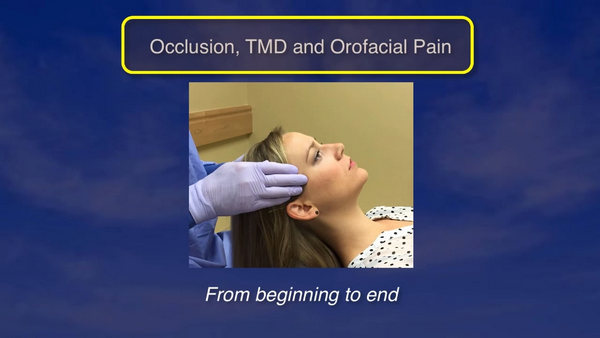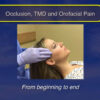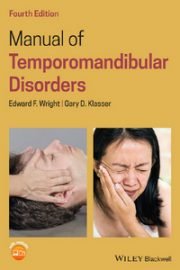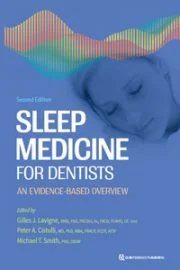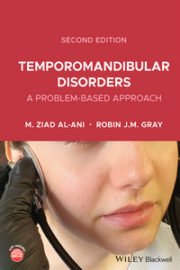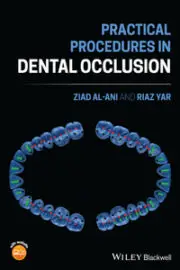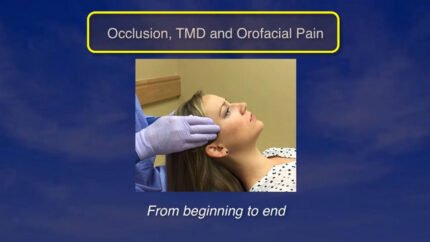- Differentiate temporomandibular disorders from other orofacial pain disorders.
- Understand the relationship between occlusion, bruxism and temporomandibular disorders.
- Understand the relationship between cervical disorders and orofacial pain disorders.
- Take a comprehensive pain history and complete a thorough examination for temporomandibular disorders and orofacial pain disorders.
- Understand the role of the clinical psychologist in managing orofacial pain disorders.
- Understand the role of the physical therapist in managing orofacial pain disorders.
- Understand the role of oral appliances in managing TMD.
Video List:
Lecture 1 Introduction to TMD and Orofacial Pain
Lecture 2 Anatomy and Biomechanics of the TMJ
Lecture 3 Part 1 Etiology of TMD
Lecture 4 Part 2 Etiology of TMD
Lecture 5 Part 1a Five Joint Positions used in Dentistry Today
Lecture 6 Five Joint Positions that are used in Dentistry Today
Lecture 7 Understanding Intracapsular Disorders of the TMJ
Lecture 8 Introduction to Orofacial Paina Understanding the Concepts and Complexity
Lecture 9 Understanding the Neuroanatomy and Neurophysiology of Orofacial Pain The Peripheral Nervous System
Lecture 10 Understanding the Neuroanatomy and Neurophysiology of Orofacial Pain
Lecture 11 he History of Pain and Pain Concepts
Lecture 12 Understanding Pain Referral in the Head and Neck
Lecture 13 The Classification of Oral and Facial Pain
Lecture 14 The History and Examination of the Orofacial Pain Patient
Lecture 15 Keys to making a Differential Diagnosis: Is it Muscle Pain or Joint Pain?
Lecture 16 The Use of Diagnostic and Therapeutic Injections: Part 1: Muscle Injections
Lecture 17 The Use of Diagnostic and Therapeutic Injections: Part 2: Nerve blocks and Intracapsular Injections
Lecture 18 Managing Muscle Pain – Part 1
Lecture 19 Managing Muscle Pain – Part 2
Lecture 20 Managing Muscle Pain – Part 3
Lecture 21 The Indications and Fabrication of a Stabilization Appliance
Lecture 22 The Management of Muscle Pain with a Stabilization Appliance: What do you do next?
Lecture 23 Indications and Fabrication of an Anterior Positioning
Lecture 24 Treatment Protocol for using an Anterior Positioning
Lecture 25 Headache – Part 1: Migraine, Tension Type Headache and Medication Overuse Headache
Lecture 26 Headache – Part 2: Trigeminal Autonomic Cephalalgia and Temporal Arteritis
Lecture 27 Neuropathic Pains – Part 1: Trigeminal Neuralgia and Entrapment Neuropathy
Lecture 28 Neuropathic Pains – Part 2: Neuritis and other Continuous Neuropathic Pains
Lecture 29 Neuropathic Pains – Part 3: Continuous Dentoalveolar Pain, Postherpetic Neuralgia and CRPS
Lecture 30 Orthodontic Therapy and TM Disorders: Maintaining a Healthy Masticatory System
Lecture 31 Diagnostic Considerations of Non-Odontogenic Toothache
Lecture 32 Occlusal Appliances: Science or Theory?
Lecture 33 The Use of Botox in Dentistry
By: Jeffrey P Okeson, DMD
Professor and Dean Founder, Orofacial Pain Program
University of Kentucky – Lexington, Kentucky, USA
33 Lectures – Duration 33 hours – Files Size: 22 GB
Frequently Asked Questions
What payment methods are accepted for purchasing the course?
We accept a variety of payment methods, including credit cards, debit cards, and PayPal, to make your purchase convenient and secure.
How long do I have access to the course material?
Upon purchasing any of our courses, you will enjoy unlimited access to the course material. This means you can watch and revisit the videos and other resources whenever you wish, allowing for a thorough and comprehensive learning experience.
Is the course accessible on mobile devices?
Yes, our courses are designed to be accessible on both desktop and mobile devices. You can easily access the course content using a web browser on your smartphone or tablet, providing flexibility in your learning.
Is there any certification provided after completing the course?
While our courses are highly educational and designed to enhance your knowledge and skills, they do not include formal certifications. However, the valuable expertise you gain from our courses can significantly benefit your surgical practice and patient outcomes.
What is the format of the course?
All our courses are delivered in a video series format. The content is available for high-definition download, ensuring the best learning experience for you.
Do I need any special software to access the course videos?
No special software is required to access the course videos. You can conveniently download the videos online using any standard web browser on your computer or mobile device.
Can I download the course materials for offline access?
Absolutely! You will have the option to download all course materials, including lecture slides, handouts, and supplementary resources. This allows you to access the content offline whenever and wherever it suits you best.

